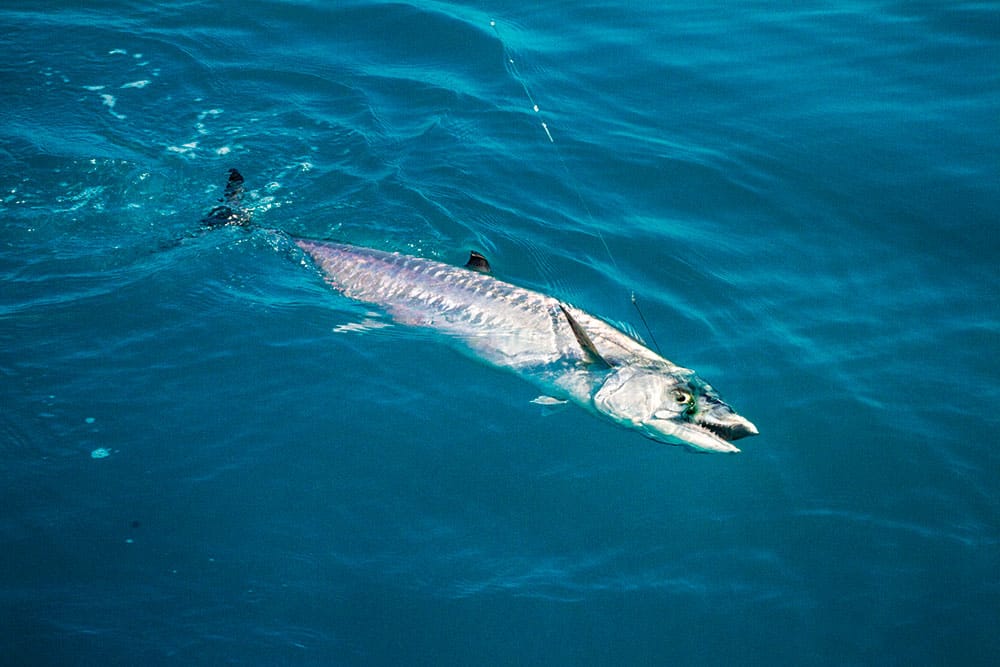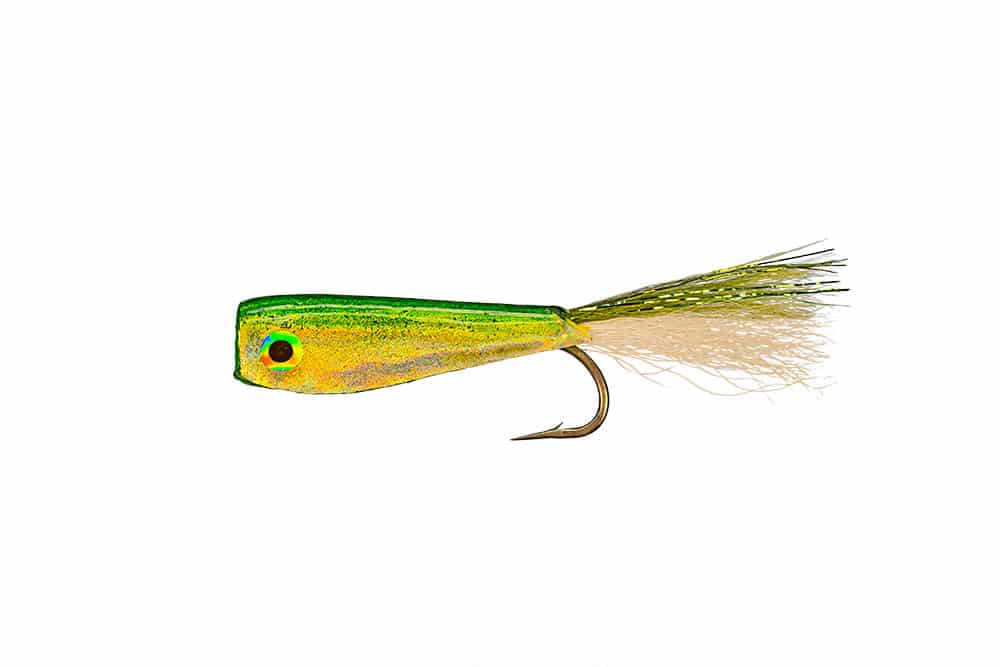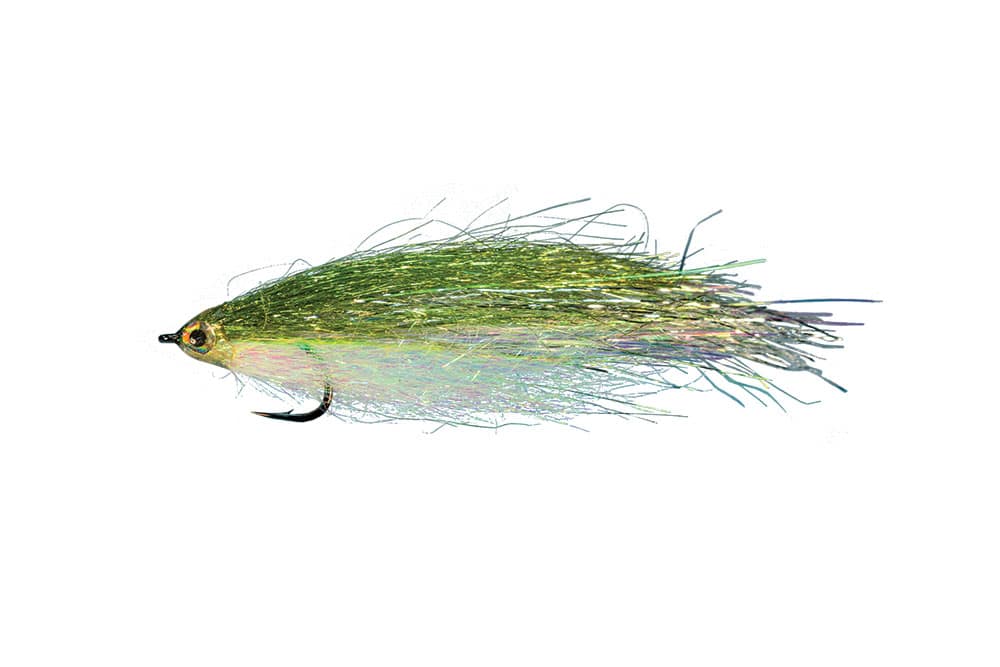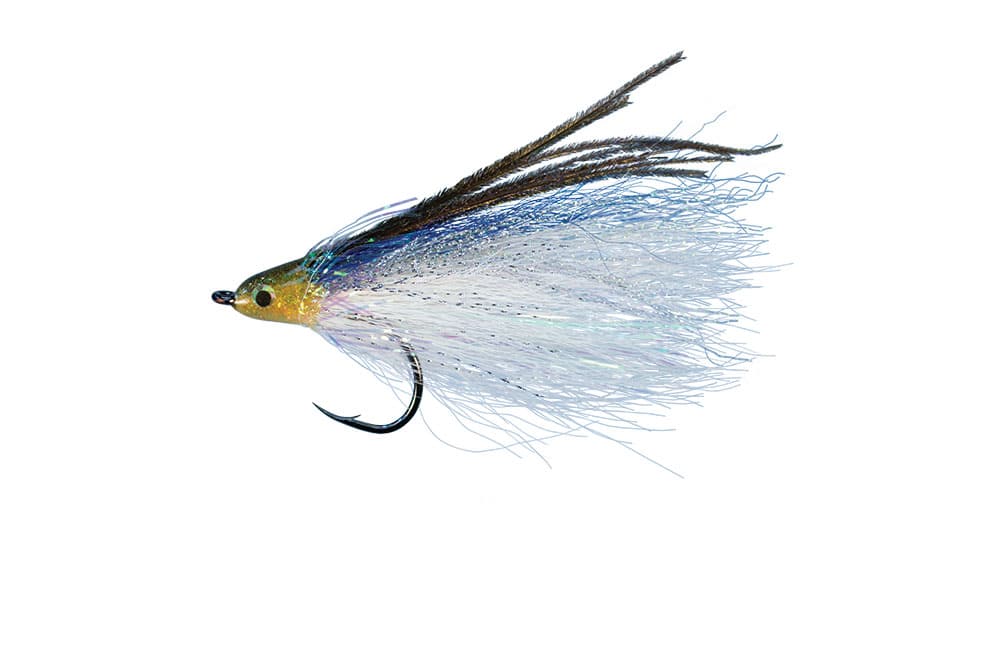Readily available from North Carolina to Key West and all throughout the Gulf of Mexico, king mackerel, also known as kingfish, is one of the most exciting species found in salt water, and it’s certainly one of the fastest. As fly-fishermen progress and look for more challenging species to conquer, kingfish can be an excellent litmus test for those looking to expand their skill sets and venture offshore after pelagics.
Proper Setup
To target kings, your fly tackle doesn’t need to differ much from what you use for the larger inshore species. You don’t need a heavy fly rod even for some of the biggest smoker kings. I prefer 9- or 10-weights, and I typically carry two rods: one set up with a floating line and another with an intermediate. And because kingfish are capable of long runs and incredible bursts of speed, a fly reel with ample capacity and a smooth drag is a must.
A variety of flashy flies that represent baitfish are also important. I like to have a few poppers, some Clouser-style flies and also a few unweighted patterns. Kingfish have razor-sharp teeth and will destroy your flies, so make sure you carry a good supply. Of course, you’ll also want to add a short wire trace — 6 to 8 inches is enough — to guard against cutoffs. I prefer single-strand wire, No. 3 or No. 5, depending on the size of the kings I’m targeting, and I use an Albright knot or a small barrel swivel to attach the wire to the rest of the leader.
Where to Look
When it comes to finding schools of kingfish, the local knowledge of a guide can simplify things. But if you are on your own and know the fish are in the area, it’s crucial to isolate the structure that holds kings, like oil rigs in the Gulf, a reef line or a small piece of artificial reef. Anywhere you have long stretches of flat, featureless bottom followed by rock piles or some other structure where baitfish are likely to congregate is a good place to try for kings. The structure does not have to be sizable — even a small bump on the bottom can hold fish. I can think of one particular spot in the Keys where a friend and I have caught loads of kings, and the structure is nothing more than an engine block in about 30 feet of water.
Chum and Gun
The most productive way for a fly-fisherman to catch kingfish is by chumming with live bait. Pilchards are my bait of choice, but any 2- to 5-inch baitfish will work. And the more bait you have for chumming, the better off you are, as it may be necessary to chum multiple places before you get a good school of kings fired up.
Once you have the right fly gear, a baitwell full of frisky baits for chumming and a few spots to fish, that’s when things get exciting. Most of the time, I like to have frozen block chum overboard as well. It attracts lots of small fish and helps get the area baited up. After about 5 to 10 minutes, throw out a few dip nets full of live bait to get a lot of activity going around your boat. You will know soon if there are kings in the vicinity, as they will start running down all the bait swimming lazily around your boat. When that happens, it’s time to get your fly in the water.
I start off by matching the size and color of my bait as best I can. A kingfish intercepts its prey by using its speed, so a fast retrieve will trigger more bites. When I’m using a streamer, I have two different retrieves. First, I try a long and fast single-hand strip. If that doesn’t produce a strike, then I put my fly rod under one arm and strip line two-handed to keep the fly in fast and continuous motion.
Be prepared for some of the greatest takes in fly-fishing. Using a surface fly, like a popper or gurgler, will get you airborne strikes as well. It is not uncommon for a kingfish to launch itself 6 to 8 feet out of the water when it eats a fly. I like to pop a surface fly a few times and then let it sit. Next, try a slow strip, so the fly starts making a wake. Alternate between these two presentations and you are sure to get strikes. And with all the activity going on around the boat, other species are bound to show up also. So stay alert and be prepared to take advantage of those opportunities.














